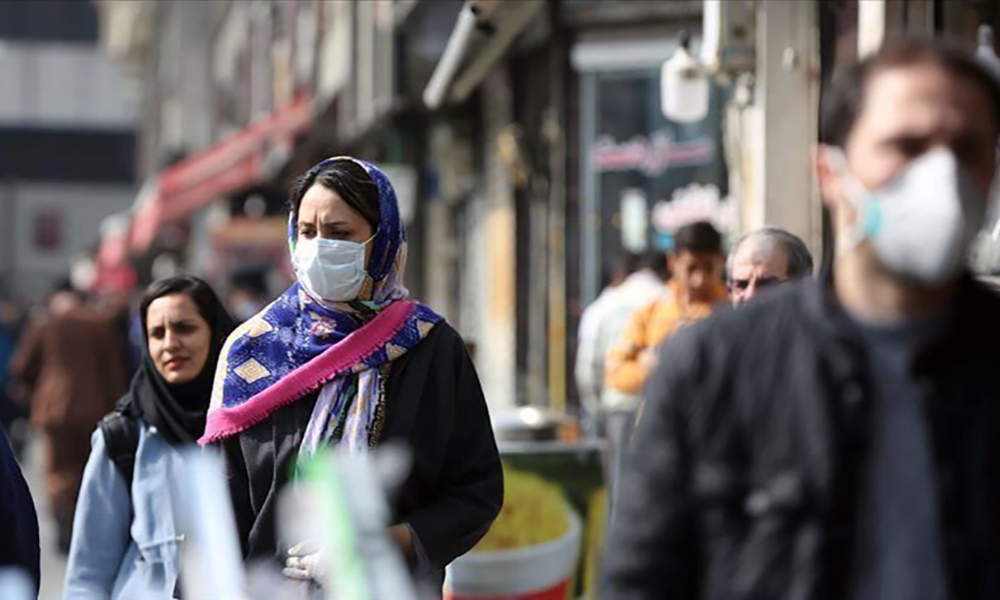COVID-19
More than half of Americans have had COVID infections, U.S. study shows

Following the record surge in COVID-19 cases during the Omicron-driven wave, some 58% of the U.S. population overall and more than 75% of younger children have been infected with the coronavirus since the start of the pandemic, according to a U.S. nationwide blood survey released on Tuesday.
The study issued by the U.S. Centers for Disease Control (CDC) and Prevention marks the first time in which more than half of the U.S. population has been infected with the SARS-CoV-2 virus at least once, and offers a detailed view of the impact of the Omicron surge in the United States.
Before Omicron arrived in December of 2021, a third of the U.S. population had evidence of a prior SARS-CoV-2 infection.
Omicron drove up infections in every age group, according to the new data, but children and adolescents, many of whom remain unvaccinated, had the highest rates of infection, while people 65 and older – a heavily vaccinated population – had the lowest.
During the December to February period – when Omicron cases were raging in the United States – 75.2% of children aged 11 and younger had infection-related antibodies in their blood, up from 44.2% in the prior three-month period. Among those 12-17, 74.2% carried antibodies, up from 45.6% from September to December.
Scientists looked for specific antibodies produced in response to the SARS-CoV-2 virus that are only present after an infection and are not generated by COVID-19 vaccines. Trace amounts of these antibodies can remain in the blood for as long as two years.
“Having infection-induced antibodies does not necessarily mean you are protected against future infection,” said the CDC’s Kristie Clarke, co-author of the study, during a media briefing. “We did not look at whether people had a level of antibodies that provides protection against reinfection or severe disease.”
U.S. COVID-19 infections are on the upswing, CDC Director Dr. Rochelle Walensky told reporters during the briefing, rising 22.7% in the past week to 44,000 per day. Hospitalizations rose for the second week in a row, up 6.6%, largely driven by subvariants of Omicron.
While deaths fell 13.2%, week-over-week, the United States is fast approaching the grim milestone of 1 million total COVID-related deaths.
Walensky said the BA.1 variant, which caused the Omicron wave, now only accounts for 3% of U.S. transmission. Increasingly, she said a subvariant first discovered in upstate New York called BA.2.121 makes up nearly 30% of U.S. cases, and appears to be 25% more transmissible that even the highly contagious BA.2 subvariant of Omicron.
In certain counties with high COVID-19 community spread, the CDC now recommends people wear a mask in public indoor settings. It cited upstate New York and the Northeast region as areas where hospitalizations have been rising.
Walensky said the CDC continues to recommend masking in all indoor public transportation settings, and stressed that vaccination remains the safest strategy for preventing complications from COVID-19.
More than 66% of the U.S. population is fully vaccinated against COVID-19, and nearly 46% of had a booster, according to federal data.
COVID-19
WHO declares end to COVID global health emergency

The World Health Organization said Friday that COVID-19 no longer qualifies as a global emergency, marking a symbolic end to the devastating coronavirus pandemic that triggered once-unthinkable lockdowns, upended economies and killed millions of people worldwide.
The announcement, made more than three years after WHO declared the coronavirus an international crisis, offers some relief, if not an ending, to a pandemic that stirred fear and suspicion, hand-wringing and finger-pointing across the globe, AP reported.
The U.N. health agency’s officials said that even though the emergency phase was over, the pandemic hasn’t finished, noting recent spikes in cases in Southeast Asia and the Middle East.
WHO says thousands of people are still dying from the virus every week, and millions of others are suffering from debilitating, long-term effects.
“It’s with great hope that I declare COVID-19 over as a global health emergency,” WHO Director-General Tedros Adhanom Ghebreyesus said.
“That does not mean COVID-19 is over as a global health threat,” he said, warning that new variants could yet emerge. Tedros noted that while the official COVID-19 death toll was 7 million, the real figure was estimated to be at least 20 million.
Tedros said the pandemic had been on a downward trend for more than a year, acknowledging that most countries have already returned to life before COVID-19.
He bemoaned the damage that COVID-19 had done to the global community, saying the pandemic had shattered businesses, exacerbated political divisions, led to the spread of misinformation and plunged millions into poverty.
When the U.N. health agency first declared the coronavirus to be an international crisis on Jan. 30, 2020, it hadn’t yet been named COVID-19 and there were no major outbreaks beyond China.
More than three years later, the virus has caused an estimated 764 million cases globally and about 5 billion people have received at least one dose of vaccine.
In the U.S., the public health emergency declaration made regarding COVID-19 is set to expire on May 11, when wide-ranging measures to support the pandemic response, including vaccine mandates, will end. Many other countries, including Germany, France and Britain, dropped most of their provisions against the pandemic last year.
When Tedros declared COVID-19 to be an emergency in 2020, he said his greatest fear was the virus’ potential to spread in countries with weak health systems.
Most recently, WHO has struggled to investigate the origins of the coronavirus, a challenging scientific endeavor that has also become politically fraught.
COVID-19
COVID-19 in Iran: Nearly 900 new cases, 24 deaths recorded

The Iranian health ministry announced on Sunday that more than 890 new cases of COVID-19 have been identified across the country during the past 24 hours, adding that 24 patients have died in the same period of time, Fars News Agency reported.
“A sum of 891 new patients infected with COVID-19 have been identified in the country based on confirmed diagnosis criteria during the past 24 hours,” the Iranian Health Ministry’s Public Relations Center said on Sunday, adding, “454 patients have been hospitalized during the same time span.”
The ministry’s public relations center said 611 people infected with COVID-19 are in critical condition.
COVID-19
China says 200 million treated, pandemic ‘decisively’ beaten

China says more than 200 million of its citizens have been diagnosed and treated for COVID-19 since it lifted strict containment measures beginning in November.
With 800,000 of the most critically ill patients having recovered, China has “decisively beaten” the pandemic, according to notes from a meeting of the ruling Communist Party’s all-powerful Politburo Standing Committee presided over by President and party leader Xi Jinping, AP reported.
China enforced some of the world’s most draconian lockdowns, quarantines and travel restrictions and still faces questions about the origins of the virus that was first detected in the central Chinese city of Wuhan in late 2019. Heavy-handed enforcement prompted rare anti-government protests and took a heavy toll on the world’s second-largest economy.
The official Xinhua News Agency quoted Xi as saying that policies to control the outbreak had been “entirely correct.” The abrupt lifting in November and December of the “zero COVID” policy that had sought to eliminate all cases of the virus led to a surge in infections that temporarily overwhelmed hospitals.
Case numbers have since peaked and life has largely returned to normal, although international travel in and out of China has yet to return to pre-pandemic levels.
China is now transitioning to a post-pandemic stage after a fight against the outbreak that was “extraordinary in the extreme,” Xinhua said.
The government will continue to “optimize and adjust prevention and control policies and measures according to the times and situations with a strong historical responsibility and strong strategic determination,” Xinhua said.
-

 Sport5 days ago
Sport5 days agoACL fever grows as fixtures finalized
-

 World5 days ago
World5 days agoUS will not take part in any Israeli retaliatory action against Iran
-

 Latest News5 days ago
Latest News5 days agoOver 50 people dead in traffic accidents over Eid
-

 Latest News4 days ago
Latest News4 days agoUS identifies Kabul airport suicide bomber
-

 Business5 days ago
Business5 days agoAfghanistan-Kazakhstan chamber of commerce opens in Herat
-

 Latest News5 days ago
Latest News5 days agoGood rains enable DABS to increase power production in Kabul
-

 World4 days ago
World4 days agoIsraeli military vows response to Iran attack as calls for restraint mount
-

 Sport3 days ago
Sport3 days agoATN secures exclusive rights to broadcast Paris 2024 Olympics
























